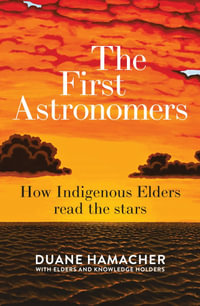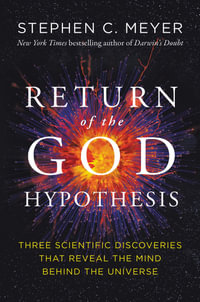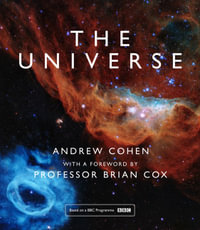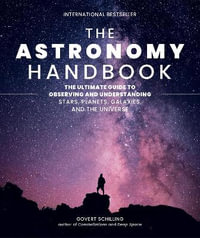| List of Figures | p. xiii |
| List of Tables | p. xix |
| Acronyms | p. xxiii |
| Preface | p. xxvii |
| Introduction | p. xxix |
| Introduction to the Hipparcos mission | |
| The Hipparcos Mission | p. 3 |
| Overture | p. 3 |
| The mission | p. 17 |
| The published data | p. 25 |
| Concepts of the new reduction | p. 31 |
| Hipparcos Astrometry | p. 39 |
| From positions and velocities to astrometric data | p. 39 |
| The Hipparcos astrometric data | p. 46 |
| Reconstruction of the along-scan rotation phase | p. 56 |
| Grid distortions | p. 58 |
| Astrometric-parameter solutions | p. 63 |
| Exploring the Hipparcos Astrometric Data | |
| Individual, Single Stars | p. 73 |
| Precisions and accuracies | p. 73 |
| Correlations | p. 80 |
| Parallaxes | p. 85 |
| Proper motions | p. 95 |
| Disturbed solutions | p. 100 |
| Comparison with the ICRS | p. 109 |
| The Astrometric Data for Composite Images and Orbital Binaries | p. 113 |
| The modulated signal for small-separation double stars | p. 114 |
| Astrometric parameters for double stars | p. 126 |
| Double stars with two catalogue entries | p. 131 |
| Variable-brightness of one component | p. 132 |
| Multiple systems | p. 135 |
| Orbital motions | p. 137 |
| Groups of Single Stars | p. 143 |
| Solving for common parameters | p. 143 |
| Application to star clusters | p. 145 |
| Calibrating luminosities | p. 163 |
| Conclusions | p. 176 |
| Kinematics of the Solar Neighbourhood | p. 177 |
| Systematic motions | p. 177 |
| The distribution of nearby stars | p. 186 |
| A Description of the Contents and Peculiarities of the Hipparcos Photometric Data | |
| The Photometric Data | p. 199 |
| The Hipparcos photometric pass bands | p. 199 |
| Formal errors and variability indicators | p. 204 |
| Variability analysis | p. 208 |
| Newly discovered variables | p. 214 |
| Hipparcos Attitude Modelling | |
| A Free-Floating Rigid Body in Space | p. 219 |
| Dynamics of a rigid body in space | p. 219 |
| The internal torques and inertia tensor | p. 223 |
| External torques acting on the satellite | p. 226 |
| Non-rigidity | p. 236 |
| The Torques on Hipparcos as Observed Over the Mission | p. 239 |
| Relation between attitude and torque reconstruction | p. 239 |
| Solar radiation torques | p. 241 |
| Magnetic torques and the remaining torque variations | p. 249 |
| Predictability of the environmental torques | p. 251 |
| Fully-Dynamic Attitude Fitting | p. 255 |
| Outline of the method | p. 255 |
| The integration engines | p. 257 |
| Implementing the gyro data | p. 260 |
| Implementing the star mapper data | p. 263 |
| Implementing the IDT transit data | p. 269 |
| Conclusions | p. 282 |
| Summary of Selected Spacecraft and Payload Calibration Results | |
| The Mission Timeline | p. 287 |
| Trend analysis and anomalies | p. 287 |
| Data coverage and detector response | p. 298 |
| Payload Calibrations | p. 299 |
| The optical transfer function | p. 301 |
| Large-scale geometric-distortion calibration | p. 304 |
| Photometric calibrations | p. 311 |
| Spacecraft-Parameter Calibrations | p. 329 |
| The on-board clock | p. 329 |
| Gyro characteristics | p. 335 |
| Thruster firings and the Centre of Gravity | p. 340 |
| The Next Generation | |
| GAIA | p. 349 |
| Introduction | p. 349 |
| The spacecraft and payload | p. 349 |
| The mission plan | p. 352 |
| The astrometric data reduction | p. 354 |
| The photometric data reduction | p. 355 |
| The spectroscopic data reduction | p. 360 |
| Data-analysis challenges | p. 363 |
| Organization of the data processing and analysis | p. 365 |
| Appendices | p. 369 |
| Transformations for heliotropic and Tait-Bryant angles | p. 369 |
| Spline functions | p. 373 |
| Linear Least Squares and Householder Orthogonal Transformations | p. 377 |
| Chain solutions, running solutions, and common parameters | p. 381 |
| Orbit parameters for binary stars | p. 385 |
| Reference orbital parameters | p. 393 |
| The data disk | p. 403 |
| The colour figures | p. 403 |
| The science data | p. 406 |
| Payload calibration data | p. 410 |
| Spacecraft calibration data | p. 416 |
| Bibliography | p. 419 |
| Subject index | p. 439 |
| Object index | p. 443 |
| Table of Contents provided by Ingram. All Rights Reserved. |
![Hipparcos, the New Reduction of the Raw Data [With DVD] : Astrophysics and Space Science Library - Floor Van Leeuwen](https://www.booktopia.com.au/covers/big/9781402063411/0000/hipparcos-the-new-reduction-of-the-raw-data-with-dvd-.jpg)























